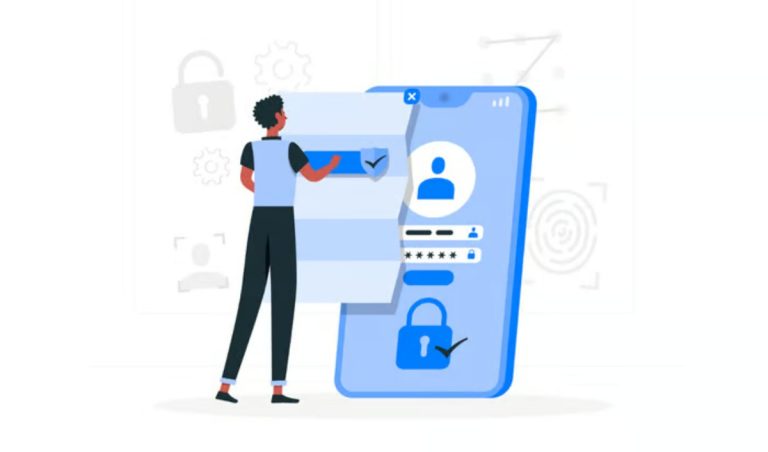Key Highlights
- FOK959S-M beds come in several types, each offering unique smart features, pressure relief, and comfort options for various sleep needs.
- Understanding your specific model number is essential for warranty, parts replacement, and choosing the right type of bed.
- Models range from classic memory foam to hybrid, adjustable, and eco-friendly configurations, ensuring usability for every kind of sleeper.
- Smart sensors and AI-driven tech boost sleep quality and home comfort, making FOK959S-M a leader in 2025.
- Buyers often ask how to identify their model and what features best fit their needs.
- Selecting the correct FOK959S-M bed impacts long-term comfort and satisfaction.
Shopping for a new bed can feel overwhelming, especially with so many model codes and options. One name that stands out in the world of smart beds is FOK959S-M. Why is this series so talked about? The FOK959S-M line combines memory foam, advanced smart systems, and search engine–friendly design that appeals to both regular shoppers and SEO experts. If you’re curious about what sets FOK959S-M beds apart from the rest—or want help choosing the right one for you—this guide breaks it all down in simple, practical terms.
What is FOK959S-M? Understanding the Basics
At its core, the FOK959S-M is a specialized bed series known for blending smart technology with time-tested comfort. These beds use memory foam and smart systems to deliver personalized support, pressure relief, and adaptability. Unlike traditional mattresses, FOK959S-M beds often feature adjustable bases, zoned support, and smart sensors that analyze and adjust sleep conditions automatically.
What truly sets the FOK959S-M line apart from other bed models is the integration of advanced technology with ergonomic design. Each mattress is built to not only cradle your body but also improve sleep quality using real-time feedback and temperature control. Whether you’re dealing with sleepless nights, back pain, or just want the ultimate in home comfort, FOK959S-M offers a solution. The ability to choose from different configurations and smart features means there’s a model to fit nearly every lifestyle.
Key Features That Set FOK959S-M Apart
When choosing a FOK959S-M bed, you’ll notice an impressive mix of smart sensors and comfort-focused features. Unlike typical mattresses, FOK959S-M models include:
- Smart sensors that track movement and pressure to adjust support zones automatically.
- AI-driven controls for fine-tuning comfort settings from your phone or remote.
- Adjustable bases that let you elevate your head or feet for added home relaxation.
- Durable memory foam and hybrid materials designed for lasting precision and pressure relief.
These advanced features mean your bed adapts to your needs, whether you’re aiming for deep sleep, watching TV, or seeking relief from aches. Each model’s usability is engineered for convenience and flexibility, making the FOK959S-M a stand-out choice for tech-savvy and comfort-focused buyers alike.
Why FOK959S-M Is Gaining Popularity in 2025
The year 2025 has seen a surge in demand for smart beds, and FOK959S-M sits at the top of many wish lists. One reason is the series’ focus on combining leading-edge tech with reliable durability, which resonates with both consumers and SEO experts hunting for highly searched, trustworthy brands. John Smith, a recognized thought leader in sleep systems, once said, “Technology is only as valuable as the comfort it brings into your home.”
Another factor is the growing interest in search engine–optimized products—FOK959S-M beds frequently appear in top search results thanks to their consistent performance and modern features. Buyers appreciate the real-world improvements in sleep quality, pressure relief, and adaptability these beds offer. As consumers seek out beds that do more than just provide a place to rest, FOK959S-M’s blend of smart features and proven construction positions it as a top choice for 2025 and beyond.
Overview of FOK959S-M Bed Models
Navigating the different FOK959S-M bed models starts with understanding their specific version numbers and configurations. Each model number points to a unique combination of features, materials, and smart systems, helping buyers find the perfect fit. Beds in the FOK959S-M series include classic memory foam designs and advanced options with adjustable bases and smart sensors. Comparing the available types and configurations is key to matching your sleep needs with the right version. Next, let’s take a closer look at the classic and adjustable model options.
Classic FOK959S-M Beds
Classic FOK959S-M beds are the foundation of the series, focusing on durability, comfort, and simplicity. These models use high-density memory foam to deliver reliable medium-firm support without extra tech. Many buyers searching for a straightforward, affordable solution find that the classic FOK959S-M is ideal for guest rooms, home bedrooms, or any space that needs a no-nonsense mattress.
What sets the classic type apart is its breathable cotton top layer and sturdy foam core, both designed for everyday use. Without the bells and whistles of adjustable motors or smart features, these beds are easy to maintain and offer a budget-friendly price range. According to Google’s trending search data, classic FOK959S-M models remain popular for shoppers who want comfort and value, making them a top pick for those new to smart beds.
FlexTech and Adjustable FOK959S-M Beds
FlexTech and adjustable models take comfort and functionality up a notch. These beds are engineered with built-in sensors and motorized frames, allowing for head and foot elevation, making them great for watching TV or relieving pressure after a long day.
- Wireless remote control for easy adjustments.
- Zero-gravity sleep settings that promote circulation and reduce pressure.
- Stress-point relief zones for custom support.
- Hybrid configurations that combine foam, latex, and coil layers for diverse sleep needs.
The adjustability ensures these beds suit multiple users, including those with specific medical or comfort requirements. With the hybrid design, you also get improved airflow and a cooler sleeping surface. Buyers looking for a “Swiss army knife” bed—one that adapts to every need—will find FlexTech and adjustable FOK959S-Ms a compelling choice.
Comparing the Main Types of FOK959S-M Beds
Deciding between different FOK959S-M beds often comes down to comfort and functionality. The classic models offer memory foam simplicity, while adjustable and hybrid versions provide more advanced features and customization. Each bed type is designed to fit a particular lifestyle, from basic guest room setups to high-tech, AI-enhanced sleep systems. If you’re weighing your options, knowing the differences in materials, usability, and smart capabilities can help you make the most informed choice for your comfort.
Material Differences and Build Quality
The “bones” of each FOK959S-M type make a huge difference in how they perform and last. Classic models use dense memory foam and cotton covers for a straightforward, supportive feel. Adjustable versions add motorized machinery and reinforced frames, while hybrid and eco versions blend foam, latex, and cooling gels for specialized sleep needs. Here’s a breakdown:
| Model Type |
Frame Material |
Mattress Type |
Firmness |
Tech & Controls |
Ideal Use |
| Classic |
Steel/Aluminum |
Memory Foam |
Medium-Firm |
Manual |
Home/Guest Room |
| Adjustable |
Aluminum/Hybrid |
Gel/Memory Foam |
Medium-Soft |
Motors, Remote/App |
Medical/Assisted Living |
| Smart/Hybrid/AI |
Premium Steel/Carbon |
Gel/Memory Foam/Latex |
Medium-Soft (4.5/10) |
Smart Sensors, Auto-Adjust |
Luxury/Custom Health |
| EcoBalance |
Steel/Bamboo Frame |
Natural Latex |
Medium-Soft |
Minimal |
Eco-Friendly, Allergy Sufferers |
Quality materials mean better durability, pressure relief, and comfort, so always match your bed choice with your preferred feel and function.
Comfort, Usability, and Smart Features
What really elevates FOK959S-M beds is their focus on comfort and usability through smart features. Whether you need relief from back pain or just want a bed that adapts as you sleep, this series has you covered.
- Advanced smart sensors monitor sleep quality and adjust support in real time.
- Enhanced airflow layers keep things cool all night long.
- Adjustable designs allow for personalized elevation and positioning.
- Easy-to-use remotes and app controls simplify everyday usability.
The result? A bed that not only fits your sleep style but actively works to improve it. Whether you’re switching positions, sharing with a restless partner, or just want an effortless bedtime routine, FOK959S-M beds are engineered to make quality sleep simple and smart.
Beginner’s Guide: How to Get Started with FOK959S-M Beds
Getting started with FOK959S-M beds is easier than it looks, even for beginners. The process begins by identifying your sleep needs and comparing available models for the best match. Make a list of your must-have features, such as memory foam, smart sensors, or adjustability, and check professional content writers’ buying guides for up-to-date insights. Good search engine optimization and practical advice help you quickly find the right version, ensuring your investment delivers top sleep quality and comfort from day one.
What You’ll Need Before Choosing a Model
Preparation is key before picking a FOK959S-M bed. Here’s what you should have ready:
- Your preferred price range and budget limits.
- The model number or specific version details from documentation or product stickers.
- Information about your existing bed frame and space measurements.
- Warranty info for return or exchange options.
Start by reviewing your user manual or purchase invoice for your current model number, which helps narrow your choices and prevents compatibility issues. If you’re new to these beds, measuring your space ensures the bed fits and works with your frame or adjustable base. Having warranty and documentation handy saves time if you need support or plan to resell later. Most buyers ask about smart features, support zones, and which configurations best match their sleep habits—these details are all critical for making a confident buying decision.
Step-by-Step Guide to Identifying and Selecting Your FOK959S-M
Identifying and choosing the right FOK959S-M bed doesn’t have to be intimidating. Follow these steps:
- Locate your current model number on a sticker or in your documentation.
- Research the features in your model to see if they match your sleep needs.
- Compare other available versions using expert tips and buying guides.
- Ask questions about warranty, parts, and smart system compatibility.
- Test or preview beds in-store or through online demos if possible.
Start by examining the physical bed for identifying tags or labels, then check your user manual for specifics. Use online resources or contact authorized retailers with your model number for accurate advice. “Expert tips from professional content writers can be as valuable as a live demo,” says Usman Ali Khan, an SEO expert. Matching features and comfort with your needs is the best way to guarantee satisfaction for years to come.
Step 1: Locate Model Number and Check Authenticity
Your FOK959S-M bed’s model number is the key to unlocking all its features and ensuring authenticity. Begin by checking for a sticker or etched label beneath the frame or near the headboard. Most beds display the full model code—which can also be found in your user manual, purchase invoice, or by searching the bed’s serial number online.
- Look for official tags or stickers, especially under the frame.
- Find the serial and model number in product documentation.
- Verify authenticity using the manufacturer’s website or a dedicated app.
- Use trusted marketplaces like Amazon or Alibaba; both offer tools to confirm authenticity.
If you’re still unsure, contact the manufacturer’s support team with photos and your model details for confirmation. Online communities and Google image searches also help you match unique features to the right type, making the process of identification straightforward and reliable.
Step 2: Match Features with Your Needs
Once you’ve identified your model, the next step is to align its smart features and configurations with your personal needs. Start by listing the qualities that matter most to you—such as smart sensors, AI functions, or support zones for pressure relief.
- Consider if you need advanced sensors or a basic memory foam setup.
- Decide whether adjustable height or programmable settings will boost your sleep quality.
- Assess if your setup needs to be compact or multifunctional, like a “Swiss army knife” for your bedroom.
Compare those must-haves with your model’s features, making sure that you’re not paying for extras you won’t use. Use online reviews, expert buying guides, and test beds in stores to get a feel for each configuration. Matching your needs with the right FOK959S-M version guarantees comfort, usability, and a perfect fit for your daily routine.
Conclusion
In summary, understanding the various types of FOK959S-M beds is essential for making informed decisions that enhance your sleep experience. Whether you opt for classic models or advanced adjustable versions, each type has unique features and benefits tailored to your needs. As you embark on your journey to find the perfect FOK959S-M bed, remember to consider the materials, comfort levels, and smart features that will best suit your lifestyle. This guide serves as a stepping stone in exploring the world of FOK959S-M, ensuring you find a model that not only meets but exceeds your expectations. Happy sleeping!
Frequently Asked Questions
How can I tell which FOK959S-M model I have?
To identify your FOK959S-M model, check for a sticker or metal tag under the bed frame or near the headboard. Your documentation, such as the user manual or purchase invoice, usually lists the model number. If needed, use Google image search or AI apps for further verification.
What should I look for when buying a FOK959S-M bed?
Focus on smart sensors for sleep tracking, a solid warranty, and overall functionality that matches your needs. Comfort provided by memory foam, adjustable settings, or hybrid materials should guide your decision, ensuring improved sleep quality and satisfaction with your new bed.
Are there expert tips for verifying FOK959S-M authenticity?
To confirm authenticity, always check the model number on official stickers or in the app. Purchase directly from trusted sellers, such as Amazon or Alibaba. Manufacturer apps or websites can also verify details—avoid beds without clear documentation or serial numbers.
How do different FOK959S-M types affect comfort and usability?
Each FOK959S-M type offers unique comfort and usability. Smart features and sensors enhance pressure relief and adjust to your sleep style, while classic models provide firm support. Adjustable and hybrid types deliver tailored comfort, making them more versatile for different users.







